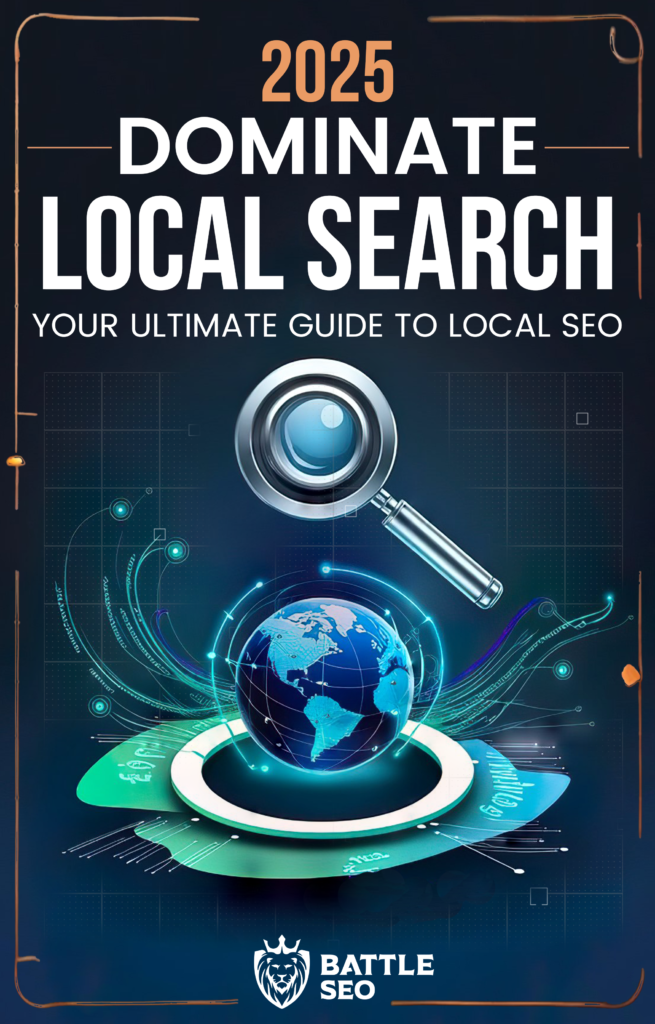That’s not just frustrating, it’s revealing. In most cases, they’re not just doing more SEO. They’re doing it smarter, more strategically, and with clear insights into what you haven’t done yet. That’s where an SEO gap analysis becomes essential.
Table Of Contents
- Start With the Right Competitors And Understand Why They’re Winning
- Compare Keyword Footprints
- Audit Their Content Structure
- Evaluate Technical Differences That Influence Rankings More Than You Think
- Study Link Profiles to Spot Opportunities and Missed Connections
- Create a Roadmap, Not a Reaction Plan
- Conclusion
- FAQs
A gap analysis isn’t about rehashing your to-do list or relying on intuition. It’s about comparing your current SEO standing to what’s actually winning in your space—keyword by keyword, page by page, and move by move. This process doesn’t just help you match your competitors; it positions you to outperform them.

Here’s a clear, thorough breakdown of how to conduct an SEO gap analysis that’s rooted in clarity and built for impact.
Start With the Right Competitors And Understand Why They’re Winning
Not every competitor is worth comparing against. The first step in a meaningful SEO gap analysis is defining who’s actually capturing your audience’s attention in search.
That may not be the brand across the street or the one you bump into at industry events. Instead, it’s the ones consistently showing up on page one for the keywords you want to rank for. Look beyond brand recognition—focus on search real estate.
Use tools like SEMrush, Ahrefs, or even a few Google Incognito searches to uncover:
- Who ranks consistently for your priority keywords?
- What kind of content format are they using?
- Are they targeting specific SERP features (like featured snippets or People Also Ask)?
Once you’ve spotted the real competition, analyze why their pages are earning attention. Is it clarity? Content depth? Better internal linking? This observation phase builds the context needed for the next steps.
If you’re unclear on which type of content aligns best with your goals, Battle SEO’s core services offer insights into matching structure, strategy, and SERP intent—all with clarity and purpose.
Compare Keyword Footprints
At the heart of any SEO gap analysis lies the keyword comparison. But don’t stop at “what they rank for that you don’t.” You’ll want to dig deeper:
- Where are they ranking higher for the same keywords?
- What variations or long-tail opportunities are they capturing?
- Are there clusters of keywords supporting one high-performing page?

A strong keyword gap analysis breaks the illusion that SEO is about ranking for one magic term. More often, it’s about keyword families that support entire content themes. That means the fix isn’t just plugging in keywords—it’s crafting better context, clearer intent, and stronger support content.
Identifying these content-rich opportunities helps you prioritize not just what to write but how to structure it to gain visibility across multiple search terms. Think beyond single-page wins.
For a tailored look at keyword clustering and on-page performance alignment, make sure to find a skilled SEO agency and see how strategic content can fuel long-term growth.
Audit Their Content Structure
Sometimes it’s not just what’s said—it’s how it’s laid out.
Review top-ranking competitor pages through a user’s lens. Do they lead with clarity? Are they skimmable? Do headers match search intent? Do they include original insight or just paraphrased noise?

Look for structure cues:
- Strong H1/H2 frameworks that mirror search queries
- Smart use of internal links and topic clusters
- Balanced use of visuals or data points to build trust
Compare this with your existing content. If your pages are dense or trying to answer everything at once, you might be pushing readers—and Google—away.
When Battle SEO works on content strategy, structure is just as important as the words themselves. This is where content stops being “published” and starts being “positioned.”
Evaluate Technical Differences That Influence Rankings More Than You Think
SEO isn’t just about keywords. Technical details still win big—especially when competitors are nailing them while you’re missing out.
While a technical SEO audit can be an entire project on its own, during a gap analysis, focus on a few critical areas:
- Site speed and performance: Are their pages faster or more responsive?
- Mobile usability: Do they rank better on mobile search?
- Crawlability: Are their URLs and sitemaps cleaner?
- Structured data: Are they enhancing their listings with schema markup?
Even subtle improvements in these areas can create a noticeable jump in performance—especially on competitive search terms. If you’re playing catch-up, fixing these areas might close more distance than a whole batch of new content.

Study Link Profiles to Spot Opportunities and Missed Connections
Backlinks are still one of the strongest trust signals in search. But rather than just counting links, your goal in a gap analysis is to understand where they’re coming from—and what they’re saying about your competitors.
Look at:
- Domain types linking to competitors (news, blogs, niche forums, etc.)
- Anchor text trends
- Pages getting the most links—and why
This isn’t about copying a backlink profile. It’s about identifying types of content or conversations you’re missing entirely. Maybe they’ve built authority by contributing to niche roundups or earning local press—moves you haven’t made yet.
Use this insight to guide your outreach or content development strategies going forward. If your competitors are earning links from educational content and yours is product-heavy, that’s a directional shift worth considering.

Create a Roadmap, Not a Reaction Plan
Once the gaps are identified, resist the urge to scramble. An effective SEO gap analysis doesn’t just point out what others are doing better—it reveals why they’re winning and how to bridge the difference over time.
This is where strategy beats speed. Build your roadmap based on:
- High-impact keyword opportunities
- Structural content changes
- Link acquisition strategies
- Technical enhancements
Don’t try to do everything at once. Group actions by priority, dependencies, and potential return. Some changes may need dev support, while others might require editorial effort. Focus on building momentum, not just checking boxes.
Over time, this steady, focused improvement wins more than flashy overhauls.
Conclusion
Most brands look inward when performance stalls. But the most valuable insights often live just outside your domain—in the sites that are consistently outranking you.

A well-run SEO gap analysis reveals patterns, not just problems. It offers evidence over opinion and action over assumption. When used right, it doesn’t just help you catch up. It helps you move ahead with clarity, purpose, and a smarter strategy.
For those serious about using SEO as a growth lever, competitive insight is the first edge you should sharpen.
FAQs
- How often should an SEO gap analysis be performed?
Twice a year is a solid rhythm, though fast-moving industries may benefit from quarterly checks. - Can I do an SEO gap analysis without paid tools?
You can start with manual searches and Google Search Console, but tools like Ahrefs and SEMrush make the process far more comprehensive. - What’s the biggest mistake brands make in SEO gap analysis?
Focusing only on keywords and ignoring technical or structural differences. Content is important—but so is how it’s delivered. - Should I prioritize fixing gaps or creating new content?
Fixing existing gaps—especially for content already ranking—can often bring quicker wins than launching new material from scratch. - Can I outsource SEO gap analysis to a specialist?
Absolutely. Many businesses benefit from third-party insight, especially when internal bias or blind spots are in play.
Close the Gaps – Outrank the Competition
→ Uncover what your competitors are doing—and what you’ve missed
→ Align your content, keywords, and site structure with real search intent
→ Turn analysis into action with focused, strategic SEO improvements
Your competitors are ranking for a reason—let’s make sure you’re the next one they’re chasing.
⭐⭐⭐⭐⭐ Rated 4.8/5 by Hundreds of Satisfied Clients

Mike Guess is an accomplished marketing expert with over 15 years of experience leading various companies to digital success. He is the CEO of Battle SEO and 39LINKS.COM, overseeing bespoke SEO and digital marketing campaigns that enhance online visibility and drive client growth. He also serves as Chief Marketing Officer and partner at We Speak Meat, where he drives brand strategy and customer engagement for a premium meat retailer.
Related Articles:
Multi-Location SEO: Boosting Rankings Around Multiple Addresses
Boost Your Franchise’s Online Presence with Effective SEO Strategies


